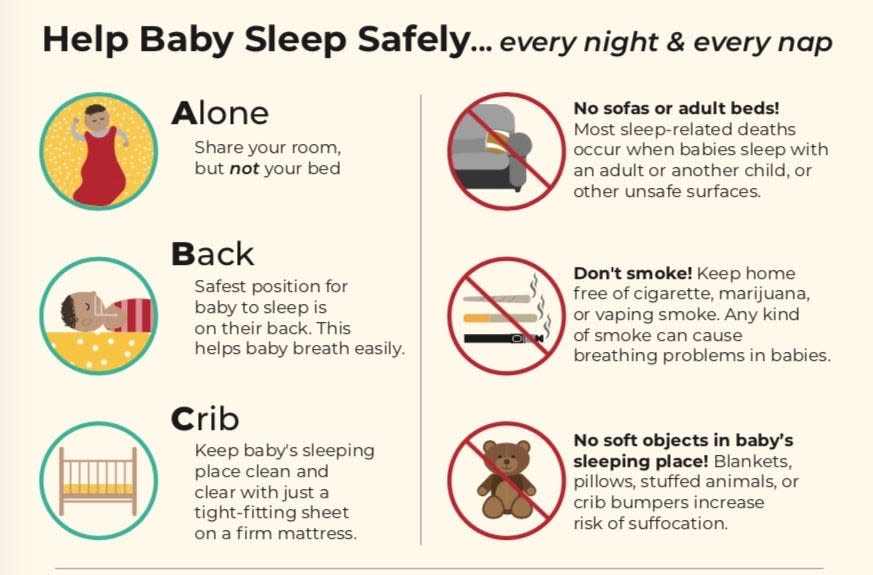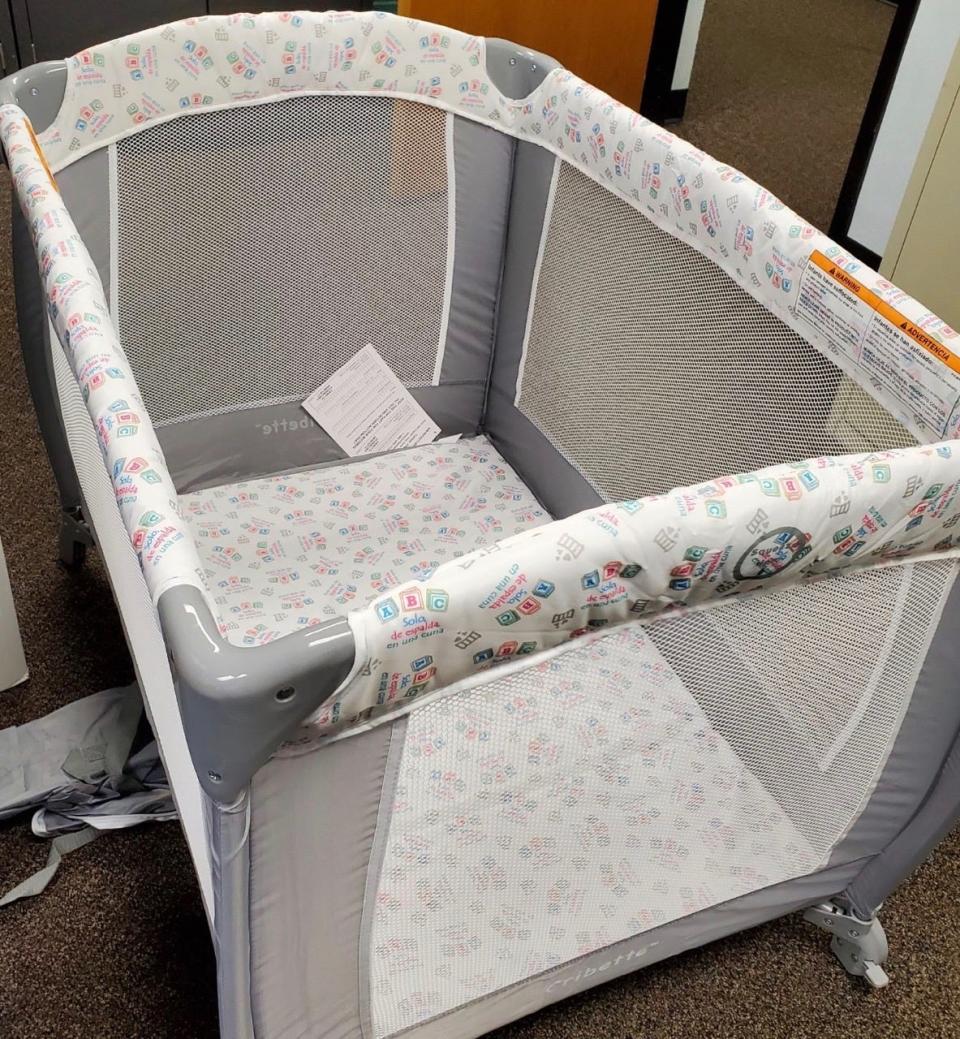Washington County has the highest rate in Maryland for sudden, unexpected infant deaths
Washington County health officials are trying to spread the word about how families can help babies sleep safer in an effort to reduce the number of sudden unexpected infant deaths.
The county health department is even providing free travel cribs to help families create a safe sleeping environment, said Danielle Stahl, the department's spokeswoman.
At a rate of 227.1 cases per 100,000 live births, Washington County had the highest rate of sudden unexpected infant deaths (SUIDs) in the state for the latest five-year period reviewed, 2015-2019, according to the Maryland Department of Health.
The county hasn't had near that many actual cases of SUIDs deaths in that period, but the rate is a way to compare statistics among different sized jurisdictions.
And Washington County has the highest rate by far, Stahl said.
"This is something that is preventable," she said.
Neighboring Allegany County had the second-highest rate of SUIDs deaths, at 184.3 per 100,000 live births, while Frederick County, to the east, had the second-lowest rate at 49.1.
The number of actual SUID deaths in Washington County for 2015 through 2019 was 18, including six deaths each in 2015 and 2017, according to the 2019 Maryland State Child Fatality Review Team Report and the county health department.
What is sudden unexpected infant death?
Sudden unexpected infant death is an umbrella term for the sudden, unexpected death of a baby younger than 1 year old when the cause can't be "fully explained after a thorough review of the medical history, a complete autopsy, and examination of the death scene," according to the child fatality report. This includes non-natural causes of death that can't be reasonably excluded and issues of concern, such as an unsafe sleeping environment.
SUID includes sudden infant death or SID cases, when "all known and possible causes of death have been ruled out," according to the fatality review team report.
Sudden, unexpected infant deaths often occur when a baby is asleep or in its sleep area, according to the Centers for Disease Control and Prevention.
The Maryland child fatality review team's report lists several "mechanisms" that often lead to sleep-related deaths.
They are:
An infant accidentally suffocating on a soft sleep surface such as an adult bed, a waterbed mattress, pillows, a soft couch or chair cushions.
Another person rolling on top of or against the baby while sharing a sleep space.
The child becoming wedged or trapped between two objects such as a wall and mattress or between cushions.
The baby being strangulated when its head and neck become caught between crib railings or entangled in a cord or other material in its sleeping environment.

More: Washington County Public Schools might be able to replace snow days with virtual learning
More: In his final proposed budget, Hogan notes surplus, tax relief
More: WCPS is hiring more substitute teachers thanks to the increase in pay, official says
What can be done?
The Maryland Department of Health and local health officials are promoting healthy sleep tips such as the ABCs:
Alone: Babies should sleep alone. Most sleep-related baby deaths occur when they are sleeping with an adult, another child, or on unsafe surfaces such as an adult bed or sofa.
Back: The safest position for a baby to sleep on is its back, helping it to breath easier. Smoke can cause babies to have breathing problems so health officials recommend keeping the home free of smoke, including cigarette, marijuana and vaping smoke.
Crib: Keep the baby's sleeping space free of other objects. The state health department recommends a clean area with a tight-fitting sheet on a firm mattress.
It's tempting to want to spruce up a baby's crib with blankets, pillows and stuffed animals or to install crib bumpers in an effort to protect the child from bumping into the sides or bars. But such objects increase the risk of a baby suffocating in its sleep area, Stahl said.
Infants should be placed on their backs, alone in their cribs, to sleep, Stahl said.
Of the SUID cases reviewed in Maryland, 49% of the infants were placed on their back to sleep, but it's important to follow all safe sleeping practices, according to information from the state health department. In those deaths where infants were placed on their back to sleep, a soft object was in the sleeping area 71% of the time, and secondhand smoke exposure was present 31% of the time.
Smoke seeps into walls, stuffed animals and other materials around a crib, Stahl said.
"We have to educate everyone," Stahl said. That includes grandparents, baby sitters and others who are entrusted with the baby, like neighbors who might watch over the baby while a parent responds to an emergency.
The youngest babies, up to 6 months, are at risk the most because they sleep around 16 to 17 hours a day, Stahl said. So if there's anything in the crib or around them that has been exposed to smoke, they are directly exposed to that for a long time every day. The item doesn't have to be touching their face for them to breath in the smoke, she said.
To keep babies warm in their crib, wrap them in a warm onesie or a sleep sack, which is a wearable zip-up blanket, Stahl said.

Free travel cribs
To help families create a safe sleeping space for their baby, the county health department has free travel cribs, Stahl said.
The free cribs are prioritized for people who can't afford them or don't have access to a safe sleeping environment for their baby, Stahl said.
Stahl estimated the department gave out 20 during the last half of 2021.
Families who need a travel crip may call 240-313-3246 and ask for Cribs for Kids Coordinator Mariel Beachley.
This article originally appeared on The Herald-Mail: Washington County has high rate for sudden unexpected infant deaths

